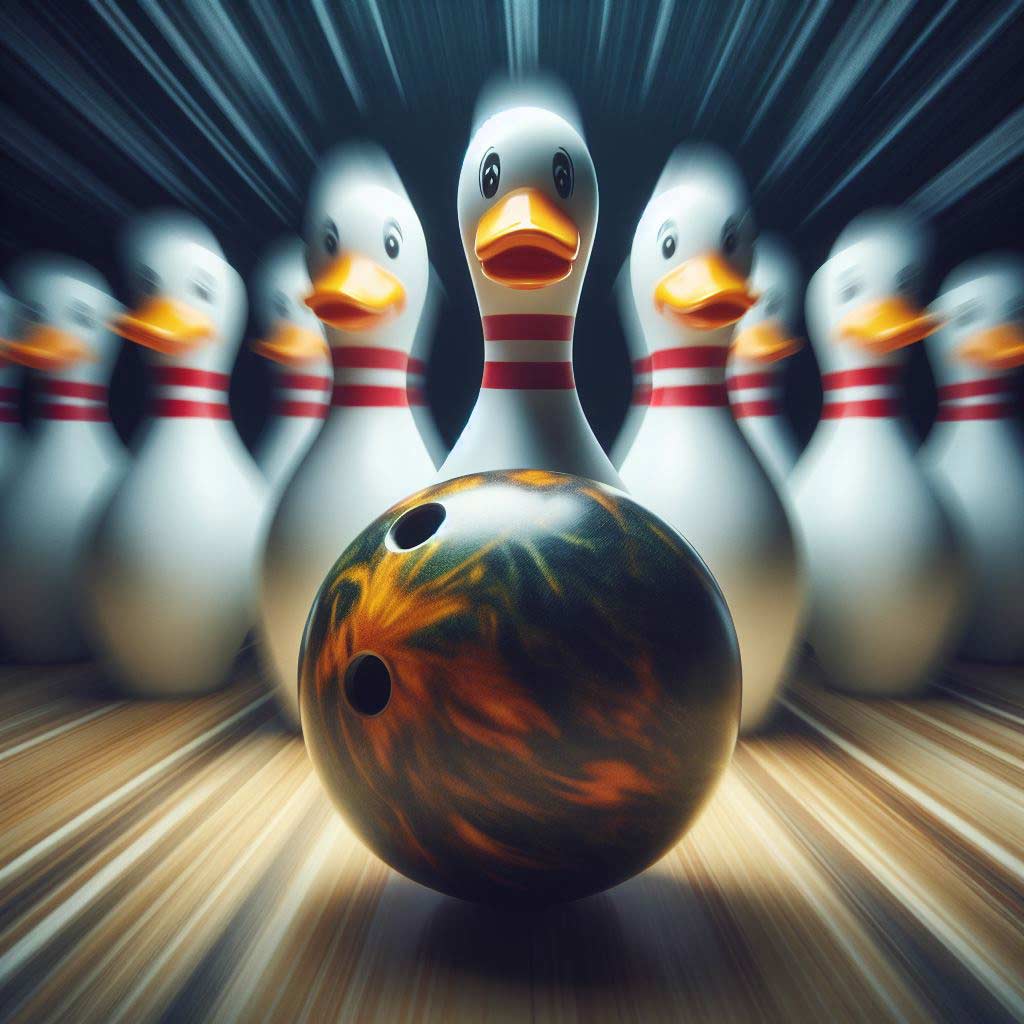In the realm of bowling, one quirky variant stands out for its unique name and shape – duck pin bowling. While many may be familiar with the standard ten-pin bowling found in alleys across the country, the origins of this lesser-known cousin are shrouded in intrigue.
With its squat, rounded pins that some say resemble a waddling flock of ducks, the “duck pin” moniker has captured the imaginations of bowlers and historians alike.
In this comprehensive guide, we’ll unravel the captivating backstory of how duck pin bowling got its name, explore alternative theories, and delve into the sport’s enduring legacy.
A Brief History of Duck Pin Bowling
Duck pin bowling traces its roots back to the early 1900s in Baltimore, Maryland. As the story goes, a group of baseball players from the Baltimore Orioles sought an indoor activity to keep them entertained and in shape during the offseason.
They stumbled upon an obscure bowling variant played on shorter lanes with smaller balls and distinctive, stout pins. The game quickly caught on, spreading through working-class communities in the region and earning a reputation as a fast-paced, high-energy alternative to standard ten-pin bowling.
While the game’s origins are humble, duck pin bowling soon blossomed into a beloved pastime, with dedicated alleys and leagues popping up across the Mid-Atlantic states.
Unlike its ten-pin counterpart, duck pin bowling features a smaller ball (roughly the size of a grapefruit), shorter lanes (around 60 feet long), and most notably, squat, round-bottomed pins that stand just over 12 inches tall.
These unique pins, coupled with the game’s fast pace and the challenge of knocking down all ten, quickly endeared duck pin bowling to its devoted following.
The “Duck Pin” Explanation
So, why is it called “duck pin” bowling? The most widely accepted theory behind the name’s origin is rooted in the distinctive shape of the pins themselves.
As bowlers first laid eyes on these stout, rounded pins, many were immediately struck by their resemblance to a flock of waddling ducks. Picture a line of ten rotund pins, their rounded bottoms giving them a distinct waddle as they scatter across the lane after being struck – it’s not hard to see the resemblance.
“The first time I saw those pins, I couldn’t help but think of a bunch of ducks wobbling around,” recalls longtime duck pin bowler and historian, John Simmons.
“The name just seemed to fit perfectly.” Indeed, countless bowlers and observers have echoed this sentiment, with the “duck pin” moniker becoming an indelible part of the sport’s charm and character.
Alternative Theories and Folklore
While the “waddling duck” explanation is the most prevalent, a few alternative theories and folklore tales have emerged over the years to account for the peculiar name.
One lesser-known theory suggests that the game was named after a person, potentially a bowler or alley owner, whose last name was “Duckpin.” However, historical records have yet to substantiate this claim, leaving it largely speculative.
Another hypothesis posits that the name originated from a specific brand or manufacturer of the distinctive pins, perhaps a company called “Duck Pin” or something similar. Again, concrete evidence to support this theory is lacking, though it can’t be entirely ruled out.
Folklore and urban legends have also woven their way into the narrative surrounding the sport’s unusual name. One popular tale claims that the name arose from a mishap involving a flock of ducks wandering onto a bowling lane, with their waddling gait inspiring the moniker. While entertaining, such stories are more likely fanciful embellishments than historical fact.
Duck Pin Bowling Today
Despite its niche status, duck pin bowling has managed to maintain a dedicated following and ardent community of enthusiasts in the 21st century. The sport remains particularly popular in its traditional Mid-Atlantic hotbeds, including Maryland, Virginia, West Virginia, and parts of Pennsylvania and Delaware.
Notable tournaments and leagues, such as the Amateur Duck Pin Bowling Association (ADPBA) Tour, attract top talent from across the region to compete for prizes and bragging rights.
And while the sport may lack the widespread mainstream appeal of ten-pin bowling, it has produced its own cadre of celebrated professionals and hall-of-famers, including legends like Pete Downs, Laura Crisman, and Mark Novitch.
Efforts are also underway to preserve and promote the unique history and culture of duck pin bowling. Organizations like the National Duckpin Bowling Congress work to document the sport’s origins, safeguard its traditions, and introduce new generations to the joys of knocking down those distinctively shaped pins.
Conclusion:
From its humble beginnings as a quirky offseason diversion for baseball players to its enduring status as a beloved regional pastime, duck pin bowling has carved out a unique niche in the world of bowling. And at the heart of its charm lies that peculiar name, inextricably tied to the distinctive shape of its rotund pins.
Whether you subscribe to the “waddling duck” theory or find yourself captivated by the sport’s alternative origin stories and folklore, one thing is certain – the name “duck pin bowling” perfectly encapsulates the whimsy and nostalgia that surrounds this distinctly American bowling variant.
So, the next time you find yourself near a duck pin alley, seize the opportunity to experience this quirky tradition firsthand. Embrace the fast-paced action, revel in the satisfying sound of those stout pins clattering to the ground, and perhaps you too will be struck by the unmistakable image of a flock of waddling ducks.





